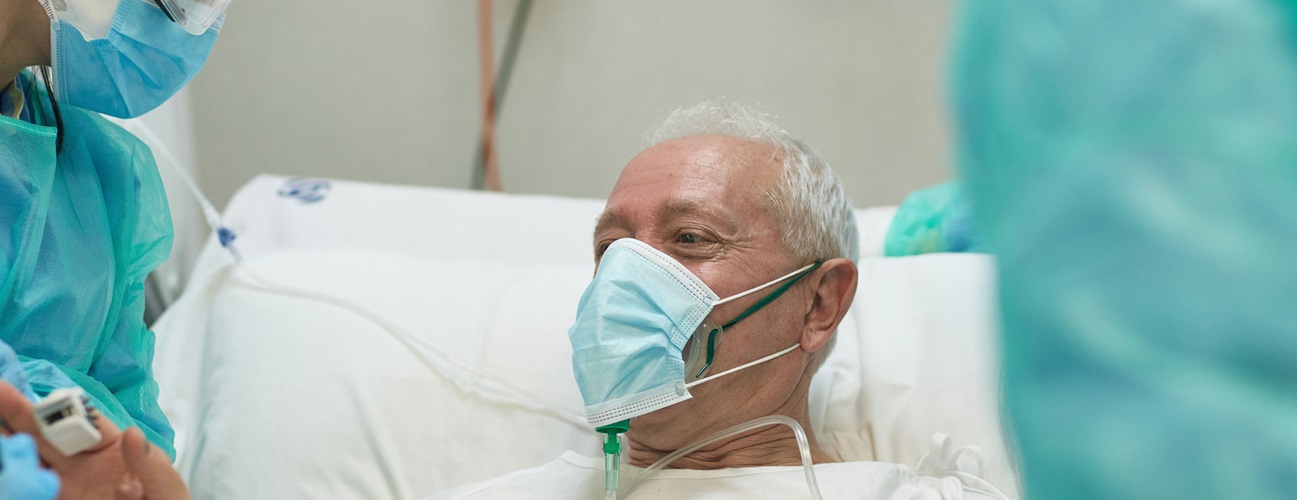Endoscopic Mucosal Resection
If you have a tumor or a lesion just beneath the surface of your gastrointestinal wall, your doctor may recommend removing it with a procedure called endoscopic mucosal resection.
What is endoscopic mucosal resection?
Endoscopic mucosal resection (EMR) is a minimally invasive procedure for removing gastrointestinal (GI) cancer and precancerous lesions using an endoscope — a flexible, tube-like tool. These growths are removed with the help of an electrical snare — a thin wire fed through the endoscope, forming a loop at the end that tightens around the tumor. When electrical current is passed through the wire, it separates the tumor and cauterizes the wound.
EMR is performed by a gastroenterologist, a doctor who specializes in treating diseases of the GI tract. The endoscope helps the doctor see inside the body with a high degree of detail. It can also help spot and remove small growths, such as polyps, from the GI tract. Depending on where in the GI tract the tumor is located, the doctor will insert the endoscope through the mouth for upper GI tumors or through the anus for lower GI tumors.
Who may need endoscopic mucosal resection?
EMR is used for tumors located within the mucosa — a mucus membrane that lines the organs of the GI tract.
Endoscopic mucosal resection is most effective for:
- Tumors that are less than 2 centimeters in diameter, or slightly larger if they have not yet reached deeper layers of the GI wall.
- Areas of abnormal tissue, precancerous lesions or superficial cancerous tumors such as gastric or small bowel lesions with clear margins (can be separated from surrounding tissues).
- Early-stage esophageal cancer or colon cancer
- Barrett’s esophagus
It may be impossible to remove some larger, deeper tumors in one piece with EMR, which also makes it difficult to confirm whether all tumor cells were removed. Tumors that have reached deeper layers may instead be treated with endoscopic submucosal dissection (ESD) or endoscopic full thickness resection (EFTR).
The Cutting Edge of Endoscopic Resection

Gastroenterologist Saowanee Ngamruengphong discusses pros and cons of endoscopic mucosal resection and endoscopic submucosal dissection in treatment of gastrointestinal tumors.
Preparing for Endoscopic Mucosal Resection
Your gastroenterologist will provide detailed instructions on how to prepare for EMR. Some steps to take before the procedure may include:
- For a lower GI tract procedure, follow a liquid diet plus a laxative or enema to cleanse the bowel.
- For an upper GI tract procedure, do not eat or drink for 12 hours before the procedure to ensure your esophagus is clear of food.
- Tell your doctor if you have any allergies.
- Make sure you have someone to drive you home after your procedure since you will be receiving medication that will make you sleepy.
- Follow your doctor’s pre-procedure directions carefully. Call the office if you have questions about your instructions.
What Happens During Endoscopic Mucosal Resection
During the procedure, your gastroenterologist will:
- Insert an IV to deliver a sedative (medication to make sure you don’t feel pain).
- Place a high-definition endoscope through your mouth or your anus, depending on the location of the tumor.
- Observe the images on a screen to avoid damage to surrounding tissue during the procedure.
- Separate the tumor from surrounding tissues by lifting it up with suction or by injecting a saline solution underneath it.
- Feed a thin wire rope through the endoscope and loop it around the base or part of the tumor, depending on its size. Electrical current in the wire cuts away the tumor and seals the cut at the same time.
- Retrieve the tumor by suction or a specialized retrieval tool and remove it through the endoscope, often piece by piece if the tumor is large.
- Sore throat if the endoscope was passed through your mouth.
- Upset stomach or vomiting if your stomach or intestine was treated.
- Excessive gas, bloating or cramping, especially if the doctors inflated the abdomen with air during treatment.
A sample of tissue may be sent to a laboratory for examination by a pathologist (a doctor who looks at tissue samples under a microscope to identify and characterize signs of disease).
Endoscopic Mucosal Resection
After the EMR procedure, you will be monitored in a recovery room while the sedative wears off. Your doctor will discuss your results with you before you leave.
The pathologist’s examination of tissue samples under a microscope can confirm whether the procedure has completely removed the tumor.
As you recover, you may experience the following side effects:






